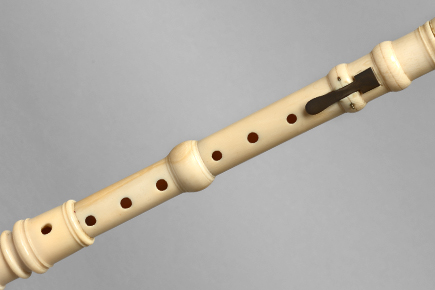Museum blog: Which came first, the music or the instrument?
Monday 4 June 2018
All music and musical instruments come from somewhere. They are part of a continuous cycle of creativity and invention. One idea inspires another, which is a dialogue that still flourishes in music and musical instrument making today.
In this blog post, Museum Learning & Participation Officer Lydia Baldwin explains how this is just one of the stories we would like to tell in our new gallery displays, the plans for which are now taking shape.
The majority of instruments that we see and hear in classical music today have been the same since the 19th century. The instruments you would find in an orchestra – for example, the violin, cello, flute and clarinet – have become universally standard. And so it is that many people are lead to believe that musical instruments have always looked and sounded this way!
Here in the Royal College of Music Museum we are privileged to look after some of the oldest instruments of their kind that still survive today. Who made them and why? What creative concepts did they incorporate? Which instruments have left their mark on what we know today?
| The ivory Scherer clarinet in the RCM collection |
p>
Take this ivory clarinet from our collections, made in c1740 by Georg Heinrich Scherer, which is one of the earliest surviving examples of a clarinet. Not only does its rare construction material make it special, but it also gives us a unique glimpse into the minds of the earliest clarinet makers and what might have inspired them to invent it.
The clarinet appeared in the 18th century; an experimental time for musical instrument makers who were driven to look for new sounds by a demand for musical instruments to more effectively reflect and express emotion (more than just loud and soft). Makers began to play with new and old ideas, often concocting new instruments from elements of others.
The man who is widely held to be responsible for inventing the clarinet is Johann Christoph Denner, a famous woodwind instrument maker (we also have an ivory recorder made by his son Jacob Denner in our collection). The clarinet struggled to gain popularity for several years. It was Mozart who helped put the instrument in the spotlight. After hearing celebrated clarinettist Anton Stadler in concert, he developed a taste for the sound of the instrument and started writing music for it.
We shared some of our treasures with visitors at Mottisfont Abbey, a stunning National Trust property in Hampshire, on our recent Museum Roadshow and tested our stories through a pop-up exhibition.
| Visitors at our roadshow exhibition at Mottisfort Abbey |
Most visitors found it difficult to relate our ivory clarinet to the clarinet we know today. In fact, many saw more similarities with the recorder. This is a perfect example of how much instruments can change and evolve as new ideas and demands emerge, inspiring makers and musicians to push boundaries and experiment. We're sure Scherer never expected clarinets to look like they do today!
| A modern clarinet |
The history of every instrument is different. Some were invented or redeveloped to meet new musical demands. Some were created as experiments or flights of fancy. Whatever the impetus, every instrument at every stage in its development provides new creative possibilities for composers and performers, inspiring more great music. There is no universal answer to which came first. Music and instruments enjoy a slow but continual process of mutual change.
At our roadshow, the overwhelming majority of visitors had never seen musical instruments quite like the ones in our exhibition. Many people were inspired to think more deeply about how music and musical instruments come into being, and challenged in their perceptions that musical instruments always have looked (and will look) the same.
We hope we've inspired and challenged you too!
Lydia Baldwin
Museum Learning & Participation Officer








